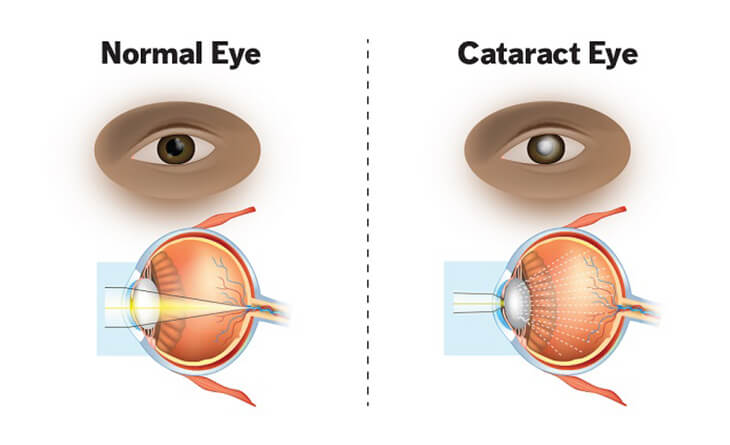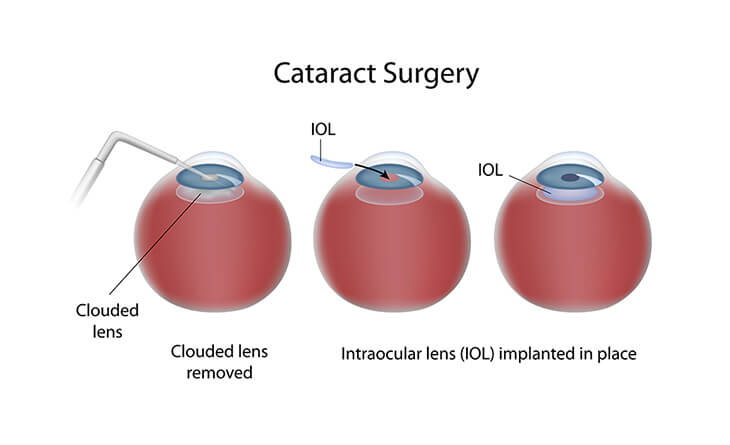Cataract Eye Surgery
A cataract surgery is an eye problem in which the usually clear lens becomes cloudy and impairs your vision. It becomes difficult to drive, read, see at night, and notice changing expressions. Cataracts work slowly, getting worse over time, and the only solution is cataract eye surgery.
With a leading ophthalmologist like Dr Anisha Gupta, you can get high-quality treatments with the latest techniques.
Dr Gupta’s specialised approach to preserving retinal and eye function ensures that every patient gets the best possible results. She adjusts every procedure as per the patient’s need, customising treatment paths best suited to their condition. Similarly, when treating cataracts, she employs numerous sophisticated techniques to ensure safety and restore vision.

When Should you Consult Your Doctor for Cataract Eye Surgery?
The longer cataracts remain, the worse the vision impairment gets. They pose a higher risk due to the way they compromise sight. Especially when we consider that the elderly are most likely to get cataracts, this condition becomes even more dangerous as blurry vision may lead to injuries and fractures.
You should consult an eye specialist if you experience the following symptoms:
With time, as they become advanced, cataracts may also become visible to people who interact with you. Whenever you start feeling any of these symptoms and cataract starts to hamper your normal routine working, it becomes necessary to undergo cataract eye surgery in Delhi.
Cataracts form due to numerous reasons and can often also be a symptom of an underlying disease.
The most common causes of cataracts include:
Age remains the most common cause of cataracts. As you get older, booking regular appointments with a reputed ophthalmologist in Delhi like Dr Gupta ensures that you keep your eye health in check.
Dr Gupta helps chart a treatment path that maximises your chances of recovery with rapid, efficient treatment if you are already developing symptoms of a cataract.
How is Cataract Eye Surgery Performed?
While Dr Gupta uses several techniques in her cataract surgery in Delhi, the underlying basis remains phacoemulsification, i.e. the most popular and safe cataract procedure.
In phacoemulsification, your surgeon makes an incision at the cornea’s edge, and creates an opening in the membrane around the lens. Then, using an ultrasonic probe, she breaks up the cloudy lens into tiny fragments through the incision. These fragments are then suctioned, and an artificial intraocular lens (IOL) is inserted in the same place.
Phacoemulsification is an outpatient procedure, not requiring a hospital stay. It is performed under local or topical anaesthesia to maximise patient comfort.
There are different types of phacoemulsification techniques, the main difference lies in incision size and how it is made. The same device is used for cloudy lens removal. Dr Gupta decides upon the incision technique depending on the patient’s case.
These techniques include:
Small Incision Cataract Surgery (SICS)
This is a type of procedure used in cases where the cataract is hard. Dr Gupta uses a manual incision to access the cloudy lens and remove it, replacing it with a transparent lens.
Although not very common today, this can help many patients, restoring their vision effectively.

Recovery After Cataract Eye Surgery
While the state-of-the-art technology and latest techniques ensure that Dr Gupta minimises downtime, there are some factors you need to note about the recovery timeline. These include:
The ease of recovery coupled with the efficient surgery cements Dr Anisha Gupta as a leading ophthalmologist in Delhi. She guarantees precision and safety in every procedure, creating reliable, modern solutions for cataracts today.
With a keen understanding of the latest technology, she is quick to pick up techniques and contribute to making cataract surgery as safe as possible for all her patients.
